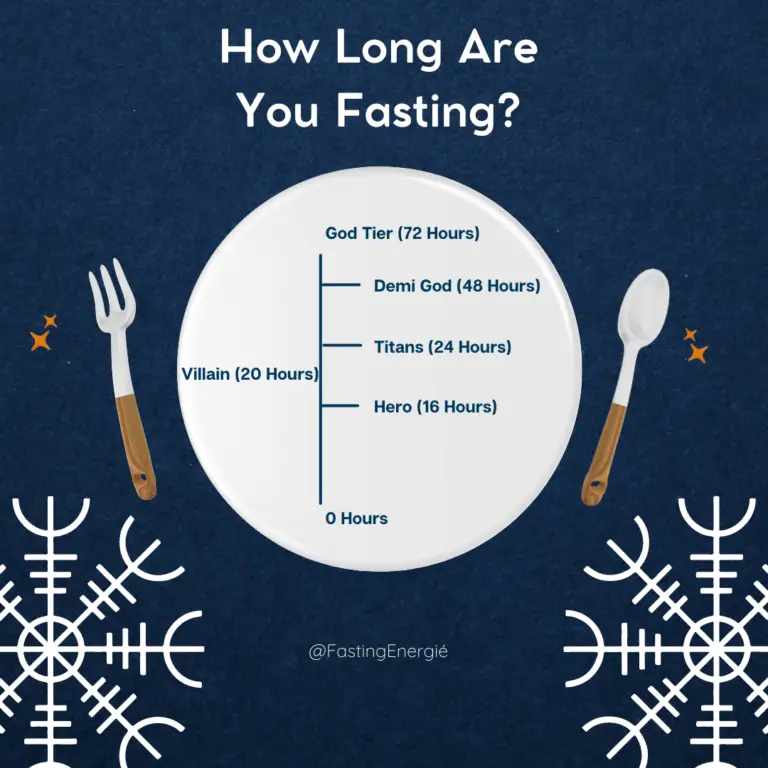The Intermittent Fasting for Women: A Complete Guide!
Intermittent fasting entails alternating periods of eating and fasting, which can have a significant impact on the body’s metabolism, hormonal balance, and overall health. These effects can be especially prominent in women due to distinct physiological processes associated with menstrual cycles, hormonal variations, and metabolic differences from men. To ensure that intermittent fasting benefits rather than harms their health, women must approach it with these concerns in mind.
Table of Contents

Intermittent Fasting: A Female Perspective
Unique Benefits and Challenges Faced by Women
Intermittent fasting has various health benefits, particularly for women, such as increased weight loss, mental clarity, and metabolic health. However, women have particular obstacles during fasting, such as probable menstrual cycle disturbances, fertility issues, and increased sensitivity to blood sugar fluctuations, which can alter mood and energy levels. These difficulties arise from the fact that women’s bodies are extremely sensitive to calorie intake and the signals that fasting delivers to the hypothalamus, which is involved in hormone regulation.
The sensitivity is attributed in part to the hormone leptin, which regulates energy balance and reproductive health. Fasting can cause dramatic changes in leptin levels, signalling to the body that it is not a good period for reproduction, potentially leading to amenorrhoea (loss of menstrual cycle) in extreme cases. As a result, women must regularly monitor their bodies’ responses to fasting and adapt their fasting schedule as needed.
Popular Fasting Schedules for Women
Several intermittent fasting programmes can be tailored to individual interests and lifestyles. Some of the most prominent ways are:
- The 16/8 Method: Fast for 16 hours per day and eat all meals within an 8-hour timeframe. It’s one of the most common types of intermittent fasting, and it’s generally simpler to stick to because it only requires skipping breakfast.
- The 5:2 Diet: This strategy entails eating normally five days a week and limiting calorie consumption to 500-600 calories on the remaining two days. It can be a less demanding choice for ladies who find regular fasting too difficult.
- Alternate-Day Fasting (ADF): This strategy consists of alternating days with no dietary restriction and days with a single meal that supplies approximately 25% of daily calorie requirements. It’s a more sophisticated fasting strategy that may be appropriate for ladies who have prior experience with various fasting routines.
Benefits of Intermittent Fasting for Women
Weight Management and Fat Loss
Intermittent fasting is very beneficial for weight control and fat loss because it improves metabolic efficiency and boosts fat oxidation. When women fast, their bodies transition from using glucose as their primary energy source to burning fat. This metabolic transition not only helps to reduce body fat but also to retain muscle mass because the body conserves energy by using fat storage. Furthermore, eating practices linked with intermittent fasting, such as eating within specified time windows, can automatically lead to lower calorie intake without the need for precise calorie tracking.
Enhanced Metabolic Health
Intermittent fasting can considerably improve metabolic health by improving a variety of disease-related biomarkers. These include lowering blood pressure, improving cholesterol levels, and lowering blood sugar levels, all of which help to lessen the risk of metabolic syndrome and type 2 diabetes. Improving metabolic health is critical for women, particularly as they approach menopause and their risk of cardiovascular disease rises.
Enhanced Hormonal Balance
Intermittent fasting can help regulate critical hormones that influence women’s health, such as insulin, ghrelin (the hunger hormone), and leptin (the satiety hormone). Fasting helps maintain a healthier body weight by increasing the sensitivity of these hormones, which reduces food cravings and leads to improved control over eating habits. Fasting has also been demonstrated to benefit women’s reproductive health by influencing hormone levels that control menstrual cycles and fertility.
The Utilisation of Carbohydrates, Fats, and Proteins in Female Bodies
How Do Women’s Bodies Process Macronutrients While Fasting?
During fasting, women’s bodies make many metabolic changes to conserve energy and protect essential organs. Carbohydrates stored as glycogen in the liver are used first, then fat stores are mobilised for energy. Protein is normally preserved during short-term fasts; however, during prolonged fasting, the body may begin to break down less essential proteins for energy, highlighting the importance of appropriate protein intake during eating periods. Women’s bodies have a larger fat-to-muscle ratio, which can affect how they metabolise fats and proteins while fasting.
HSL, Catecholamines, and Fasting
The Function of Hormones and Neurotransmitters in Fat Mobilisation
Hormone-sensitive lipase (HSL) and catecholamines play important roles in fat mobilisation while fasting. HSL is an enzyme that converts stored lipids into free fatty acids that can be used for energy. Catecholamines, including adrenaline and noradrenaline, are neurotransmitters produced during fasting and stress. They increase HSL activity and the body’s ability to burn fat as an energy source. Women’s bodies are designed to retain more fat for reproductive functions, therefore this system is especially crucial. Fasting can activate these pathways more frequently, resulting in more efficient fat loss and energy utilisation.
Tailoring Intermittent Fasting to the Specific Needs of Women
Personalised Fasting Plans based on Life Stages and Health Conditions
Intermittent fasting must be incorporated into a woman’s lifestyle while taking into account various life stages—such as menstruation, pregnancy, breastfeeding, and menopause—as well as particular health considerations such as thyroid problems or insulin resistance. For example, younger women may prefer shorter fasting windows to preserve energy for busy lifestyles, whereas postmenopausal women may benefit from longer fasts to assist manage weight gain caused by hormonal changes. Women with specific health disorders should contact with healthcare practitioners to develop fasting schedules that will not exacerbate their problems, ensuring that fasting provides benefits without causing harm.
Challenges Specific to Women
Menstrual Cycle Considerations
Fasting can disrupt menstrual periods because it affects hormones like oestrogen and progesterone. When women begin fasting, they may experience irregular periods or amenorrhoea (a lack of menstruation), especially if the fasting is intense. Monitoring the menstrual cycle can help women adapt their fasting duration and intensity so that it supports rather than upsets their hormonal balance.
Impacts on Hormones and Reproductive Health
Changes in nutrition and energy intake can have an impact on hormonal oscillations that regulate reproductive health. Fasting may have a temporary effect on fertility, and women who are attempting to conceive may need to change their fasting habits to improve their reproductive health.
Controlling Energy Levels and Mood Swings
Fasting can occasionally cause low energy levels and emotional swings, particularly owing to blood sugar imbalances. Women may need to tailor fasting schedules around their daily duties or opt for modified fasting methods that include nutrient-dense, low-calorie foods or beverages that can assist stabilise energy and mood.
Nutritional Guidelines During Fasting
Essential Nutrients for Women’s Health:
Women must ensure that they get enough iron, calcium, magnesium, vitamin D, and B vitamins, which are essential for bone health, blood cell development, and energy metabolism. During non-fasting periods, women should consume foods high in these nutrients, such as leafy greens, nuts, seeds, dairy or fortified equivalents, and lean meats.
Meal Planning Ideas for Fasting Days
On fasting days, meals should be planned to maximise nutrient intake. Women should consider:
- Timing meals to meet energy requirements: Eating larger, more balanced meals earlier in the day can provide sustained energy.
- Including protein in every meal: To aid with muscle maintenance and satiety.
- Incorporating Healthy Fats: Avocados and olive oil, for example, can help with hormone regulation and fat-soluble vitamin absorption.
- Choose complex carbohydrates, such as whole grains and veggies, to give sustained energy and important nutrients.
Intermittent Fasting and Exercise
Combining Exercise and Fasting
Integrating exercise into an intermittent fasting routine can help with fat loss and metabolic health, but it takes precise scheduling and body awareness. Exercising during the fasting window might increase fat oxidation because glycogen levels are low, causing the body to rely on fat for energy. To avoid tiredness and overstrain, the intensity and type of exercise must be appropriate for your fasting condition.
Recommended Exercise for Fasting Days –
- Low to Moderate Intensity: Walking, mild jogging, yoga, and gentle cycling are suitable for fasting. These activities are more sustainable and less prone to exhaust energy reserves significantly.
- High-Intensity Exercise: More strenuous exercises, such as weight training or high-intensity interval training (HIIT), are best done closer to the meal window. This timing guarantees that muscles are refuelled shortly after the workout, promoting recuperation and muscular synthesis.
Common Concerns
Controlling Hunger and Cravings
Hunger is a normal element of fasting, however it can be addressed in strategic ways:
- stay hydrated: Often, hunger sensations are symptoms of dehydration.
- Keep Busy: Working on a task can help distract you from your hunger.
- Consume Low-Calorie Beverages: Drinks like herbal tea or black coffee can help you avoid hunger without adding calories.
Dealing with Social and Family Meals
Navigating social gatherings while fasting requires strategy.
- Schedule Fasting Around Social Events: If possible, time your fasting periods around planned meals.
- Communicate Your Goals: Sharing your fasting schedule with friends and family can provide encouragement and understanding.
- Be Flexible: Changing your fasting schedule to accommodate special events is totally okay.
Thyroid: Understanding Thyroid Function and Its Relation to Fasting
Fasting can have an impact on the thyroid gland’s function, which regulates metabolism.
- Reduced Thyroid Activity: Prolonged fasting may reduce thyroid hormone synthesis, potentially reducing metabolism.
- Monitoring Symptoms: Fatigue, weight gain, and feeling cold are all signs of thyroid disease. If these symptoms persist, you may need to change your fasting regimen.
How to Break a Fast
Best Practices for Ending a Fast Safely and Effectively, breaking a fast properly is just as vital as the fast itself.
- Begin with Small, Light Meals: Choose foods that are easier to digest, such as soups, sautéed vegetables, or fruits.
- Gradually Increase Intake:To avoid gastrointestinal discomfort, gradually increase intake of larger meals and more complex foods over several hours.
When should you take supplements?
Timing and Types of Supplements During Fasting –
- Multivitamins and Non-Caloric Supplements: Can be taken at any time and do not break the fast.
- Caloric Supplements, such as protein powders or gummies, should be consumed during eating periods.
- Electrolytes: They can help you stay hydrated and maintain your mineral balance when you fast.
Getting Started with Intermittent Fasting
How to Start and Find the Right Plan
Starting intermittent fasting might be intimidating, but picking the correct strategy based on your lifestyle, health needs, and objectives can help make the process go more smoothly. Here is how to start:
- Educate Yourself: Learn about the various fasting strategies, including the 16/8 method, the 5:2 diet, and alternate-day fasting, to see which one best fits your schedule and dietary preferences.
- Set Specific Goals: Are you fasting for weight loss, better digestion, more attention, or general health? Your goals will determine the type of fasting regimen that works best for you.
- Consult with Healthcare Providers This is especially critical for women who have diabetes, thyroid disorders, or are pregnant or breastfeeding. Getting medical assistance can help ensure that your fasting regimen is both safe and effective.
- Begin Slowly: If you’re new to fasting, start with shorter fasts and gradually increase the duration as your body adjusts. This can help to reduce initial adverse effects including weariness and irritation.
- Plan Your Meals: When not fasting, eat nutrient-dense foods that provide enough vitamins, minerals, and energy. This helps to maintain energy levels and nutritional balance.
Modifying Your Fasting Plan as Needed
As you advance with intermittent fasting, it’s critical to listen to your body and make adjustments based on your findings.
- Monitor Your Body’s Responses: Pay attention to how your body reacts to fasting. Fatigue, extended hunger, or stress may signal the need to change your fasting pattern.
- Adapt to Life Changes: Changes in lifestyle, stress levels, health status, or weight loss progress may necessitate changes to your fasting schedule.
- Remain flexible: Maintaining intermittent fasting for an extended period of time requires flexibility. Be willing to adapt fasting periods and lengths to accommodate social activities, travel, or changes in routine.
Conclusion:
Intermittent fasting is a flexible strategy to enhancing health and well-being, but it must be carefully considered, particularly for women. Understanding the particular benefits and limitations of fasting allows women to properly use this tool to improve their health, from metabolic health to hormonal balance. With the proper planning and changes, intermittent fasting can be a long-term lifestyle choice that enhances longevity and wellness. As you begin or continue your fasting journey, remember to stay informed, listen to your body, and make adjustments as needed to meet your health goals. This guide is intended to help you navigate intermittent fasting with confidence, ensuring that your approach is personalised and in line with your specific health needs and lifestyle.
Frequently Asked Questions
u003cstrongu003eHow many hours should a woman do intermittent fasting?u003c/strongu003e
The optimal fasting hours for a woman can vary based on individual health, goals, and tolerance. Commonly, a daily fasting period of 14-16 hours is suggested for women, which is slightly less than the often recommended 16-18 hours for men, to accommodate hormonal balance.
u003cstrongu003eWhat is the best intermittent fasting method for women?u003c/strongu003e
Many women find the 16:8 method (16 hours of fasting followed by an 8-hour eating window) to be effective and sustainable. However, the 14:10 method can also be a gentler option, especially for those who are new to fasting or have concerns about hormonal balance.
u003cstrongu003eHow much weight can a woman lose in a month on intermittent fasting?u003c/strongu003e
Weight loss can vary widely, but women might expect to lose anywhere from 2 to 6 kilograms (about 4 to 13 pounds) in a month when combining intermittent fasting with a healthy diet and regular exercise.
u003cstrongu003eHow many hours should a 40 year old woman have intermittent fasting?u003c/strongu003e
A 40-year-old woman might start with a 14-hour fasting window and adjust based on how she feels and her health goals. This duration tends to be effective yet gentle enough to maintain hormonal balance as metabolic rates start to change with age.
u003cstrongu003eDoes intermittent fasting work for over 50s?u003c/strongu003e
Yes, intermittent fasting can be beneficial for those over 50, including women. It can help manage weight, improve insulin sensitivity, and potentially boost heart health. However, women over 50 should consider shorter fasting windows (e.g., 12-14 hours) to accommodate changes in metabolism and body composition with age. It’s also advisable to consult with a healthcare provider before starting any new diet regimen to ensure it aligns with individual health needs and conditions.







